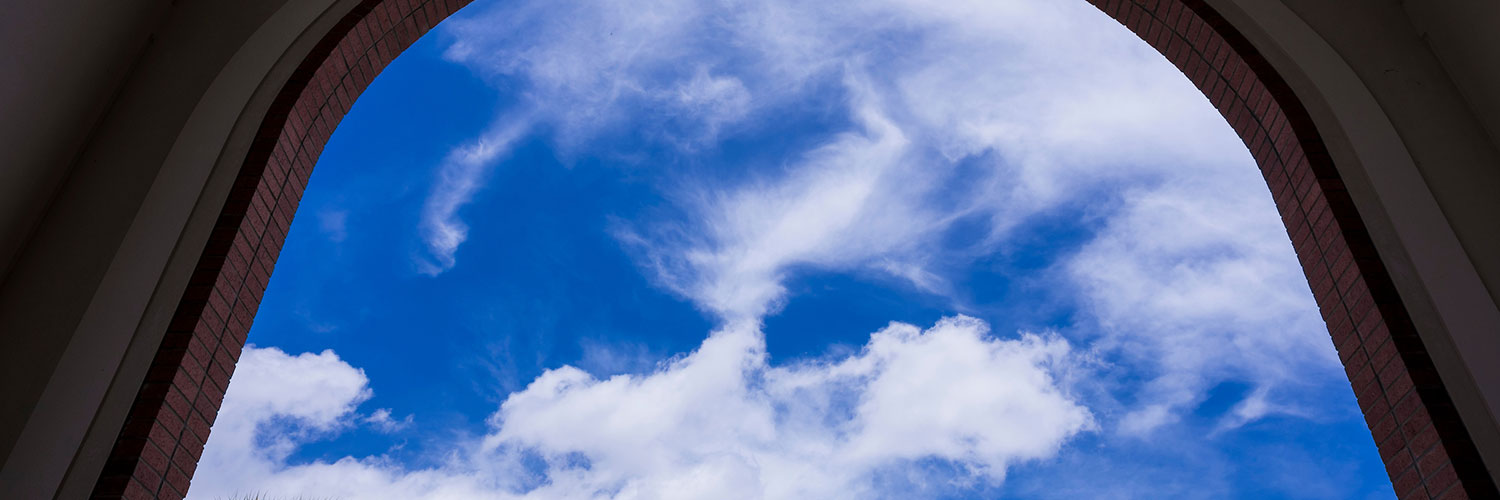
Johnson, Kevin B.

Kevin B. Johnson
Visiting Research Professor | College of Engineering and Science - Ocean Engineering and Marine Sciences
Contact Information
Personal Overview
Kevin B. Johnson, Professor of Oceanography and Environmental Science, Department of Ocean Engineering and Marine Sciences. Program Chair for Oceanography, Environmental Science, Sustainability, Meteorology, Environmental Resource Management, and related programs. Dr. Johnson received his B.S. (1992) in Zoology at Brigham Young University and Ph.D. (1998) in Biology from the University of Oregon.
Prior to coming to Florida Tech, Dr. Johnson was appointed Postdoctoral Fellow of the Smithsonian Institution, where he worked on problems of growth and navigation in meroplanktonic invertebrate larvae. During his time with the Smithsonian, Dr. Johnson was involved in deep-sea submersible research offshore of the Bahamas, part of a team studying the ecology of new deep-sea species. Dr. Johnson was then recruited by the National Science Foundation as a Postdoctoral Fellow at NSF’s Center for Environmental Analysis – Centers for Research Excellence in Science and Technology (CEA-CREST) at California State University, Los Angeles. During his tenure at CEA-CREST, Dr. Johnson conducted field research on mussel recruitment and benthic ecology at the Wrigley Institute for Environmental Studies (University of Southern California) based on Santa Catalina Island. Dr. Johnson also conducted research on similar topics at Bamfield Marine Station (BMS) in Barkley Sound, British Columbia, Canada. Bamfield is the marine laboratory for a consortium of Canadian universities, including the University of Victoria, the University of British Columbia, Simon Fraser University, the University of Alberta, and the University of Calgary. Following his time with the National Science Foundation, Dr. Johnson was a Lecturer in Zoology at Ohio Wesleyan University, a liberal arts college. This experience led Dr. Johnson to Florida Tech, which he chose partly because of the small class sizes. In his career, Dr. Johnson has spent nearly 6 months at-sea, teaching and conducting research, and lived and worked at 10 coastal marine laboratories.
In addition to over thirty peer-reviewed articles on marine ecology and restoration, including studies of oyster settlement, copepod grazing, and harmful algae, Dr. Johnson has authored book chapters in books such as “Atlas of Marine Invertebrate Larvae” (C.M. Young, ed., 2002) and “An Identification Guide to the Larval Marine Invertebrates of the Pacific Northwest” (A.L. Shanks, ed., 2001). Dr. Johnson is also the author the second edition of “A Guide to Marine Coastal Plankton and Marine Invertebrate Larvae” (1977, 1996), a reference manual in print for almost 50 years and used on every continent.
Dr. Johnson is the co-director of Florida Tech’s Indian River Lagoon Research Institute and the university’s representative on the Technical Advisory Committee to the Indian River Lagoon’s National Estuary Program. Dr. Johnson is the university's representative to the Florida Institute of Oceanography (FIO) and serves on the Diversity, Equity, and Inclusion and STEM Advisory Committee for FIO Ships and Marine Labs committees for that body.
At Florida Tech, Dr. Johnson is the Director of “Marine and Environmental Field Projects”, an innovative program exposing undergraduates to graduate-level research. His research program revolves around plankton ecology, marine invertebrate recruitment, invasive species, seagrass ecology, harmful algae, and estuarine restoration He has mentored over one hundred undergraduate and graduate students on research in his laboratory, and the National Science Foundation has recruited him as Chair of the Ecology Panel for the Graduate Research Fellowship Program (2010-2013). Dr. Johnson has received recognition within the university for Excellence in Teaching (College and University Awards, 2008 and 2009), Excellence in Service (University Award, 2012), “Most Valuable Panther” (Fall 2012), and the President’s Award for Service Excellence (2013, 2014, and 2015).
Educational Background
Ph.D. University of Oregon (1998)
B.S. Brigham Young University (1992)
Professional Experience
Program Chair for Environmental Science, Oceanography, Sustainability, Meteorology, Environmental Resource Management, and related programs (2021-Present)
Professor of Oceanography and Environmental Science (2017-Present)
Departmental Safety Officer (2019-Present)
College Boat Coordinator (2019-Present)
Graduate Student Coordinator - Department of Marine and Environmental Systems (2014-2016)
Director, Marine and Environmental Field Projects, senior undergrad capstone, hands-on research experience (2002- Present)
Assistant Professor (2001-2008), Associate Professor (2008-2017), Oceanography & Environmental Science
Postdoctoral Fellow (1999-2000), National Science Foundation's Center for Environmental Analysis - Centers for Research Excellence in Science and Technology (CEA-CREST), California State Univeristy Los Angeles.
Postdoctoral Fellow (1998-1999), Smithsonian Institution, Smithsonian Marine Station.
Member, Science Technology Engineering Modeling Advisory Committee, IRL National Estuary Program (2015-Present)
Member, Board of Advisors, Eco-Terra Farms. New Solutions to Feed Our World (2016-2018)
Fellow, Cooperative Institute for Marine and Atmospheric Studies (2015-2018)
Co-Chair, Technical Advisory Committee, Indian River Lagoon National Estuary Program (2014-2015)
University Committees:
Committee Member, Academic Program Assessment Committee, responsible for accreditation assessment (Present)
Taskforce Member, Florida Tech College of Engineering and Science Return-to-Learn Covid-19 Taskforce (2020-2021)
Council Member, College of Engineering Leadership Council, strategies for current events (2020-2021)
Senator, Faculty Senate, Florida Institute of Technology (2017-2018)
Committee Member, Florida Tech Title IX Committee (2016-2018)
Committee Member, College of Engineering Undergraduate Curriculum Committee (2010-2014)
Council Member, College Council, College of Engineering, curriculum approvals (2009-2014)
Committee Member, University Retention Committee (2011-2012)
Current Courses
OCN 1010 - Introductory Oceanography
ENS 1001 - The Whole Earth Course
OCN 4103/5103 - Marine and Estuarine Zooplankton
OCN 3101 - Biological Oceanography
OCN 3111 - Biological Oceanography Laboratory
OCN/ENS 3911 - Field Projects Proposal
OCN/ENS 4911/4912 - Marine and Environmental Field Projects
OCN 5101 - Principles in Biological Oceanography
OCN 4107/5107 - Pacific Coastal Environments (field course on the coast of Oregon)
Selected Publications
Ma, X., K.B. Johnson, et al. 2022. The in-situ release of algal bloom populations and the role of prokaryotic communities. Water Research 219 (2022) 118565. https://doi.org/10.1016/j.watres.2022.118565
Santagata, S and KB Johnson. In press. The Phoronida. In: An Atlas of Marine Invertebrate Larvae, 2nd Edition (CM Young, M Sewell, and M Boyle, eds.). Elsevier Publishers.
Smith, NF, A Kuris, K Rawlinson, and KB Johnson. In press. The Platyhelminthes. In: An Atlas of Marine Larvae, 2nd Ed. (C Young, M Sewell, & M Boyle, eds.). Elsevier Publishers.
Sweat LH, Alexander H, Phlips EJ, and KB Johnson (2021) Mesozooplankton Community Dynamics and Grazing Potential Across Algal Bloom Cycles in a Subtropical Estuary. Front. Mar. Sci. 8:734270. doi: 10.3389/fmars.2021.734270
Ma X, Jacoby CA, and Johnson KB (2021). High Densities of a Prochlorophyte Inhibit Grazing by the Herbivorous Copepod Parvocalanus crassirostris. Front. Mar. Sci. 8:664153. doi: 10.3389/fmars.2021.664153
Ma X, Jacoby CA, and Johnson KB (2021). Grazing by the Copepod Parvocalanus crassirostris on Picochlorum sp. at Harmful Bloom Densities. Front. Mar. Sci. 8:664154. doi: 10.3389/fmars.2021.664154
Maglio, CK, RJ Weaver, JH Trefry, CR Bostater Jr, JM Shenker, KB Johnson et al. 2021. Environmental benefits realized during navigation maintenance dredging. WEDA Journal of Dredging 19(1):1-13.
Cox, A, D Hope, MA Zamora-Duran and KB Johnson. 2018. Environmental factors influencing benthic polychaete distributions in a subtropical lagoon. Marine Technology Society Journal 52(4):58-74.
Ma, X and KB Johnson. 2017. Comparative Phototaxis of Calanoid and Harpacticoid Copepods. Marine Biology 164:26(1-13).
Johnson, KB, and K Soltis. 2017. Larval supply and recruitment of the ivory barnacle Balanus eburneus on oyster cultch used in oyster-reef restoration. The Journal of Crustacean Biology 37(3), 243–248.
Johnson, KB. 2017. Laboratory settlement of the eastern oyster C. virginica influenced by substratum concavity, orientation, and tertiary arrangement. The Journal of Shellfish Research 36(2):1–10.
Johnson, KB, and JL Roberts. 2017. Florida inlets and intertidal biofouling communities. The Journal of the Marine Technology Society 51(2):7-21.
Sweat, LH, G Swain, K Hunsucker, and KB Johnson. 2017. Transported biofilms and their influence on subsequent macrofouling colonization. Biofouling 33(5):433-449.
Johnson, KB and AL Rhyne. 2015. Ontogenetic shift of spectral sensitivity in the larval phototaxis
of two sympatric caridean shrimp, Lysmata wurdemanni and L. boggessi (Decapoda: Lymatidae). Marine Biology 162:1265-1273.
Sweat, LH and KB Johnson. 2013. The effects of fine-scale substratum roughness on
diatom community structure in estuarine biofilms. Biofouling Vol. 29, No. 8, 879–890.
Sloan, NB, E Goodfriend, and KB Johnson. 2007. Zooplankton Abundance and Distribution in
Tidal Marshes Impounded for Mosquito Control. Florida Scientist 70(4):476-488.
Ralston, E, A Bacon, and KB Johnson. 2007. In situ Phototaxis of Zooplankton in the Indian
River Lagoon (Florida) Determined using LED Light Traps. Florida Scientist 70(4):489-505.
Johnson, K.B. and R.B. Forward Jr., 2003, Larval photo responses of the ployclad flatworm Maritigrella crozieri, (platyhelminthes, Polycladida) (Hyman). The Journal of Experiemental Marine Biology and Ecology.
Johnson, K.B. and A.L. Shanks.2003, Low rates of predation on planktonic marine invertebrate larvae. Marine Ecology Progress Series.
Johnson, K.B. and R.L. Zimmer. 2002. Phylum Phoronida. In: C. Young, M. Rice and M. Sewell (editors), An Atlas of
Marine Invertebrate Larvae. Academic
Press, London.
Smith, N., K.B. Johnson and C.M. Young. 2002. Phylum Platyhelminthes. In: C. Young, M. Rice and M. Sewell (editors), An Atlas of Marine Invertebrate Larvae. Academic Press, London.
Johnson, K.B. 2001. The Sipuncula.
In: A.L. Shanks (editor), An Identification Guide to the Larval Marine Invertebrates of the Pacific Northwest. Oregon State University Press, Corvallis, Oregon.
Johnson, K. B. 2001. The Phoronida.
In: A.L. Shanks (editor), An Identification Guide to the Larval Marine Invertebrates of the Pacific Northwest. Oregon State University Press, Corvallis, Oregon.
Johnson, K.B. 2001. The Nemertea. In: A.L. Shanks (editor), An Identification Guide to the Larval Marine Invertebrates of the Pacific Northwest. Oregon State University Press, Corvallis, Oregon.
Johnson, K.B. and L. A. Brink, 1998. Predation on bivalve veligers by polychaete larvae. Biological Bulletin 194: 297-303.
Johnson, K.B. and A.L. Shanks, 1997.
The importance of prey densities and background plankton in studies of predation on invertebrate larvae. Marine Ecology Progress Series 158: 293-296.
Smith, D.L. and K.B. Johnson, 1996.
A Guide to Marine Coastal Plankton and Marine Invertebrate Larvae, second edition. Kendall/Hunt, Dubuque, Iowa.
Bradshaw, W.B. and K. B. Johnson, 1995. Initiation of Metamorphosis in the Pitcher-Plant Mosquito: Effects of Larval Growth History. Ecology 76(7): 2055-2065.
Recognition & Awards
Presidential Award for University Excellence, Florida Tech (2015)
Presidential Award for University Excellence, Florida Tech (2014)
Andrew W. Revay, Jr. Award for Service Excellence, Florida Tech (2013)
Presidential Award for University Excellence, Florida Tech (2013)
Most Valuable Panther, Florida Institute of Technology (September 2012)
Walter Munn, Jr. Award for Teaching Excellence, College of Engineering, Florida Tech (2009)


 Give to Florida Tech
Give to Florida Tech